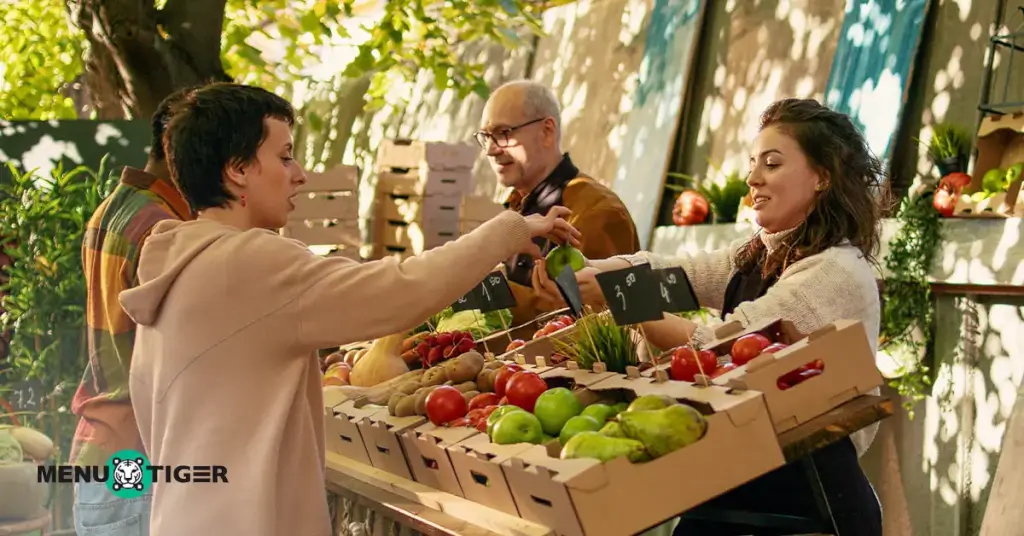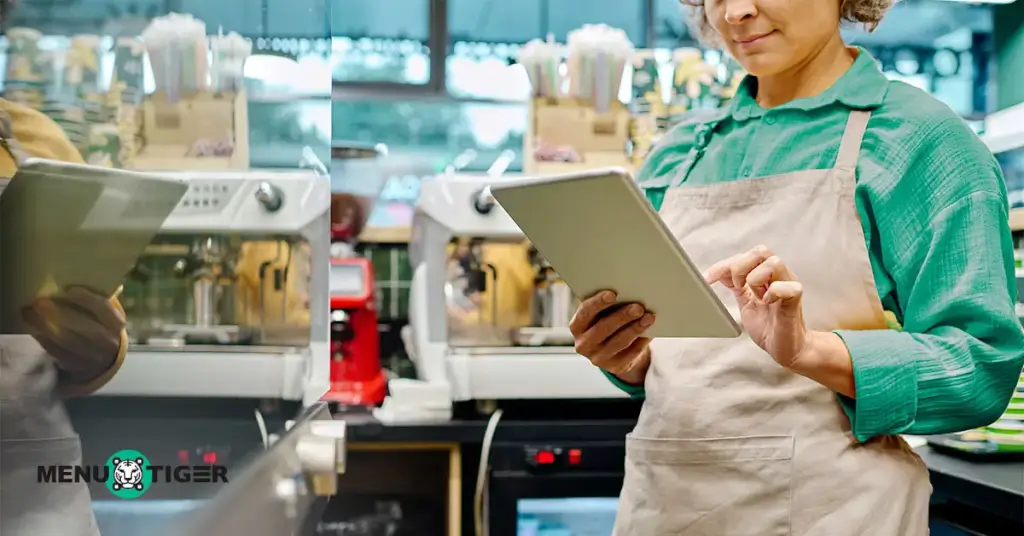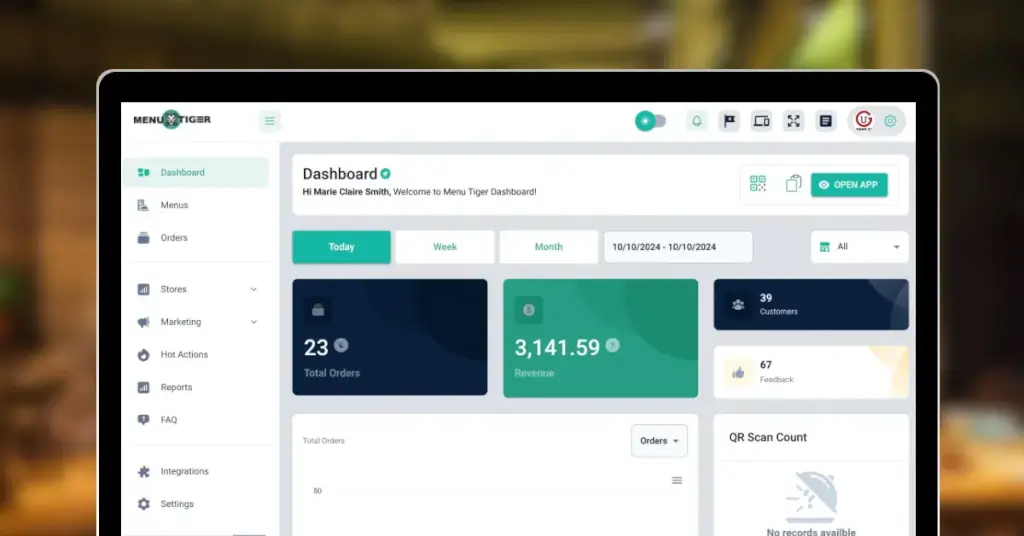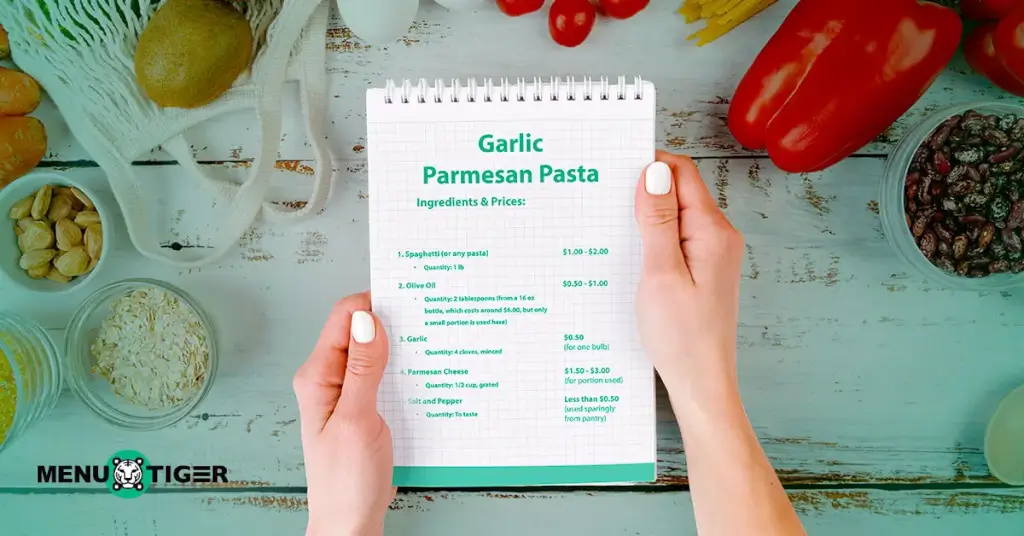When running a food business, the success rate is quantified by how much you make in a day, month, or year.
This means that it’s all about numbers, particularly on what you’re selling. One of the effective ways for you not to lose track of it is to know how to calculate food costs.
Mastering this gives you an edge in preventive planning and helps you identify the problems in advance, particularly on fluctuations in ingredient prices and other expenses.
In response, a step-by-step guide is comprehensively prepared to help you know your numbers well. Strategies like portion control and using restaurant order management tools are added to get you fully equipped in your restaurant venture.
Table of Contents
ToggleA breakdown of what a restaurant food cost is
Bar & Restaurant News defines food cost as the percentage of sales or ratio that determines how much you make or lose on each sale.
This means adding your beginning inventory and purchases together, then subtracting from your ending inventory. Once you have the actual food cost, also known as usage, you’re going to divide it by your total sales to get your food cost percentage.
This formula is particularly used by most to determine the prices of every dish and to forecast how much they will make for a particular number of sales.
Take note that a profitable restaurant typically operates between 28 to 35 percent of food costs. Adding your labor cost and other restaurant cost can make up to 75 percent of your total sales.
5-step guide on how to calculate food cost for a secured profit

Knowing how to calculate your food cost accurately is crucial for managing expenses, pricing menu items, and improving profitability, especially if you are starting a new business model.
Here’s how:
1. Determine the cost per ingredient per serving
List all the ingredients needed for every dish you’ll make. With the list, identify the quantity you’ll need for each ingredient per serving of your menu item.
Look at your invoices to find the unit cost for each ingredient, such as price per pound, ounce, and liter.
Then, multiply the amount of each ingredient used per serving by its unit cost.
For example:
Ingredient: Cheese
Amount per serving: 2 ounce
Cost per ounce: $0.30
2 ounce (Amount per serving) x $0.30 (cost per ounce) =$0.60 (Ingredient cost per serving)
2. Add up the total ingredient costs
Determine the total cost per serving of a specific menu item by adding the individual ingredient costs.
So let’s say you’re menu is sandwich:
The cost per serving of cheese earlier is $0.60. Add this to the other ingredient costs, such as bread at $0.50 per serving and lettuce at $0.10.
Add them together. You’ll get a total cost serving of $1.20.
This total then provides an accurate figure of the food cost for one serving, which is essential in setting your restaurant menu pricing and calculating your food cost percentages.
3. Calculate the food used in a period
Start by determining your beginning inventory. This encapsulates all the value of your food items on hand at the beginning of the period.
This initial inventory count gives you the baseline for calculating usage.
Track all your food purchases throughout the period—say a month—and add these to your beginning inventory. This represents the total food available for use during that period.
At the end of the month, subtract another inventory count from the sum of your beginning inventory and purchase to show the actual cost of food used.
Here is an illustrative example of how to use the food cost formula:
Cost of Food Used = (Beginning Inventory + Purchases) – Ending inventory
- Begining inventory: $2,000
- Purchases during the period: $5,000
- Ending Inventory: $1,700
Cost of Food Used = ($2,000 + $5,000) – $1,700
= $7,000 -$ 1700
= $5,300
The result in this example represents the total food cost used during that period.
4. Find the food cost percentage
Calculate how much of your sales revenue goes toward purchasing food.
Use this food cost percentage formula:
Food Cost Percentage =(Cost of food Used / Total Sales) x 100
Determine first how much your total sales revenue for the same period you calculated your food cost. Let’s say you make $15,000.
Plug all the values into the formula. So, its:
Food Cost Percentage = ($5,300 /$15,000) x 100
=0.35 x 100
= 35%
This means that 35 percent of your sales revenue goes to food purchases, which is an ideal percentage for a profitable business.
5. Adjust the menu pricing if necessary
Though it’s optional if the percentage of the cost of food used is higher than the desired number, consider adjusting your menu prices or portions.
Make sure that you keep it around 25 percent or 35 percent to maximize your profit margin.
This ensures that you get the positive returns annually.

List of effective tips for lowering your food costs
Your food costs can go up in the blink of an eye if not properly managed or monitored. To prevent this or at least maintain the ideal bracket, here are a few strategic tips you can do:
Optimize your menu offerings
Take a good look at your menu’s performance to determine which items are the most profitable and popular.
You may want to consider removing low-selling, high-cost items to cut expenses and simplify your inventory.
If you wish to retain them, leverage menu engineering to strategically place them in your menu for better visibility and pricing.
Negotiate with suppliers

Build strong relationships with your suppliers for a positive negotiation.
You see, when trust and good rapport are there, you can both benefit from it: One provides better prices with discounts and the other buying in bulks.
You just need to make sure that you regularly review any changes in the prices and, if possible, look for local vendors or farmers you can work with for a cheaper rate, especially in terms of transportation and delivery.
Implement portion control
Standardize portion sizes to prevent over-serving that may lead to food waste.
Use portion control tools like measuring cups, scopes, food scales, food dishers, and spoodles.
This not only controls the amount of food on a plate but also the ingredients used in a certain dish.
Through this, you’ll no longer have excess ingredients or leftover food, cutting down your restaurant food costs.
Implement inventory management

Regularly track your inventory to avoid overstocking or understocking, which can lead to spoilage and lost sales.
Use a restaurant inventory system to automate your monitoring, making it easier for you to determine which one is expired or not, as well as the order schedules and whatnot.
Make sure that you conduct inventory checks regularly to avoid discrepancies.
Reduce waste with repurposing and batch-cooking
Use leftovers or excess ingredients to make new menu items like soups, salsa, or specials, which you can add as sides or combos for your regular menu.
See to it that one ingredient, garlic, can be used in various dishes to maximize its usage.
Also, consider bath cooking and preparing ingredients in bulk for high-demand items to reduce preparation time and ensure minimal food waste in restaurants or pubs.
Using a restaurant order management system to cut expenses and boost profit

Food costs plus other operational expenses can pile up, leading to a huge percentage cut in your sales revenue.
But with the right planning and maximizing the use of automated digital tools, like an online menu ordering system, MENU TIGER, you can cut your operational expenses by half.
Here’s how:
Use a smart QR code menu to display your offerings
No need to budget a printing cost whenever you update your menu; the digital menu QR code does all the work for you.
Customers can access your menu with ease with just a scan, place, and pay their order simultaneously, lowering labor costs for waitstaff.
Also, the good thing about this is you can upsell products that are not popular and put them as add-ons to your regular menu.
Just make sure when implementing it you’ll get your trained on how to assist customers to learn how to scan the menu QR code for better turnover rate.
Get a comprehensive report on your sales
This restaurant QR code menu software has designed compartmentalized performance metrics, where you can see the number of orders in real time.
You can then automatically generate the necessary information for your profit forecasts.
Cross-promote your restaurant through a website
You can create and design your website, where you can display your offerings, the history of your restaurant, and even put up your promotions.
Not only that, you’ll be able to link all of your social media accounts for better reach to your target audience.
Upsell your various products
You can add choices and add ons to your online menu for better upselling opportunities.
Through this, you’ll be able to pair up some bottles of your beverages that aren’t popular with your most profitable items.
Thus emptying your shelves without having to throw them away.

Maximize your profit through with smart food costing
Learning how to calculate food cost is an edge for a business owner like you.
You get to have fact-checked projections on how much you’ll make, spend, and lose. It’s a huge advantage where you can align your business strategies in favor of your restaurant.
Whether you cut labor costs, recurring marketing and promotions expenses, or shift from traditional to modern workflow through technology like restaurant menu ordering software, you are fully prepared to ensure that your business stays on top of the game.
So, set aside time to learn this skill and seek various digital tools like MENU TIGER, which is designed to assist you in making more while spending less.
Experience it for yourself. Visit the website, sign up, and get ready to hit high on the graph.
FAQs
To reduce food costs without sacrificing quality, restaurants can focus on strategic purchasing, waste reduction, and menu engineering.
This also includes building strong relationships with suppliers, which often leads to better pricing, bulk discounts, and reliable, high-qaulity ingredient. Smart portion control can minimize waste, using edible parts of ingredients creatively.
Venture on cross-utilizing ingredients across multiple menu items, reducing the number of ingredients you need to stock without compromising variety or quality.
Food costs should ideally be reviewed weekly to ensure timely adjustments and maintain profitability.
Weekly reviews help catch fluctuations in ingredient prices, identify waste, and monitor portion control.
Additionally, it allows you to respond quickly to supplier price changes, seasonal cost variations, and any issues with inventory turnover.



